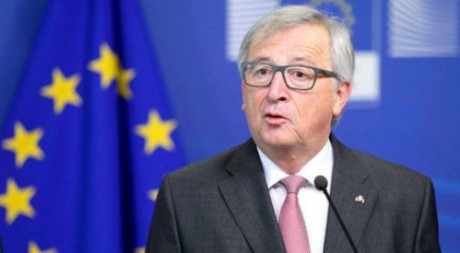(VOVworld) – The EU Summit last week pointed up differences among the 27 members concerning the EU future.
 |
President of the European Commission Jean Claude Juncker
|
The EU Summit convened representatives from 27 members, without Britain, to discuss the EU’s future after Brexit. They had hoped to issue a joint statement on the 60th anniversary of the signing of the Treaty in Rome, but they failed to reconcile their different views and no consensus was reached.
Differences over a multi-speed EU
The European Commission’s concept of a multi-speed EU proposed in its White Paper on the EU’s future triggered disagreements at the summit. Britain’s exit from the EU is forcing the EU to reframe the bloc so that member states can decide their own degree of integration and connectivity within the bloc.
This concept has stirred up arguments among EU members because it implies different levels for different countries. Bu a multi-speed EU reflects reality and lays a legal foundation for countries who want to deepen their integration. German Chancellor Angela Merkel says the EU should affirm the value of “unity in diversity” on the 60th anniversary of the signing of the Treaty in Rome on March 25.
At a meeting in France with the leaders of Germany, Spain, and Italy, French President Francoise Hollande said unity does not equal uniformity and some EU countries are able to advance faster. The German Chancellor agree that different growth rates are inevitable. The EU needs to accept the fact that some countries are growing faster than others.
For new EU members, the multi-speed concept is a threat because it sanctions different development levels and widens the east-west gap in immigration, money, and laws. Poland and Hungary are concerned that if they don’t get involved in “enhanced cooperation”, they will be set aside in the EU’s decision making process and become “2nd class countries”. Polish Prime Minister Beata Szydlo rejected the idea of a multi-speed EU. Before the summit, Poland, Slovakia, Czech, and Hungary called on the EU to treat all members the same.
Appeal for unity
President of the European Commission Jean Claude Juncker assured members that the multi-speed concept doesn’t aim to create a new iron curtain. The EU doesn’t intend to adjust current treaties because a multi-speed EU in fact already exists. The Eurozone and the Schengen, two successes of EU cooperation, haven’t involved all EU countries. Mr. Juncker acknowledged that a multi-speed EU puts some eastern European countries at a disadvantage.
President of the European Council Donald Tusk called on all members to maintain political unity in post-Brexit while agreeing that there are reasons for a multi-speed EU.